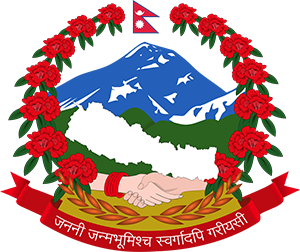
Karnali Province Government
Ministry of Land Management, Agriculture and Cooperatives
Directorate of Agricultural Development
Birendranagar, Surkhet


Karnali Province Government
Ministry of Land Management, Agriculture and Cooperatives
Directorate of Agricultural Development
Birendranagar, Surkhet

introduction
Karnali Province has 10 hilly districts and is geographically diverse. There are 27,984 square kilometers of land in this province, which has a total of 79 local levels, and the population is 15,70,418. Agriculture sector occupies 45.6 percent of the province's total gross domestic product, therefore, agriculture sector is a priority sector for economic development as well as being the basis of livelihood of this province. This province is an area with great potential for prosperity through agricultural development from the point of view of geographical diversity and infrastructure development. Honorable Minister of Ministry of Land Management, Agriculture and Cooperatives dated 06/25/2075, Karnali Province, for supporting the formulation of policies and plans for the agricultural sector of the entire province, conducting agricultural development programs and conducting regulatory work and administrative management and regulation of subordinate agencies. Bimala K.C. It has been established in Surkhet, Birendranagar, under the Ministry of Land Management, Agriculture and Cooperatives, under the Ministry of Land Management, Karnali Province. We expect the cooperation, assistance and coordination of all concerned agencies to carry out the responsibilities assigned to the Directorate in an effective manner. Directorate of Agricultural Development, Birendranagar, Surkhet, Karnali Province, Nepal
purpose
1. To increase agricultural production and productivity based on potential and geographical features.
2. Transforming the subsistence farming system into a profitable, sustainable and commercial system.
3. To increase employment and income levels by developing agriculture-based industries.
4. To support the national economy by increasing the competitiveness of the agricultural sector.
5. Expanding and verifying technology by conducting adaptive research.
6. To increase non-farm employment by promoting the market arrangement of agricultural products and small agricultural enterprises.
7. Maintaining a balance between agricultural development and environmental protection.
Plan
1. Emphasis on commercial production of potential crops by identifying specific crop areas based on the potential of the specific location.
2. To promote the development of agricultural technologies with the participation of agricultural entrepreneurs, private sector, research centers, agricultural universities and to develop and expand resource centers.
3. Collecting, analyzing and distributing agricultural price and market information as well as developing the necessary infrastructure for market management.
4. By connecting agricultural production with agro-based industry, keeping parallel between log production and industry.
5. Conducting production programs that help in crop diversification, commercialization, business promotion by making maximum use of land use.
6. Giving priority to intensive crop production in irrigated areas, small irrigation and the utilization of water resources in agricultural productive areas.
7. Conducting agricultural development programs targeting the upliftment of backward farmers and women.
8. Emphasizing the development and expansion of agricultural tourism.
9. To promote conservation, promotion and use of local, indigenous, endangered crops.
10. Emphasizing the implementation of plans and programs for the utilization of fallow land by discouraging the trend of keeping arable land fallow.
11. Emphasis on the adoption of technology development, follow-up, adoption, reduction of losses during production and storage in the production, processing, storage and distribution system of agricultural produce.